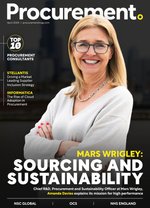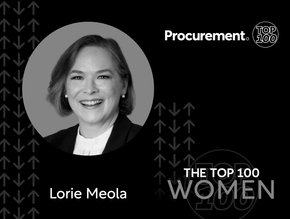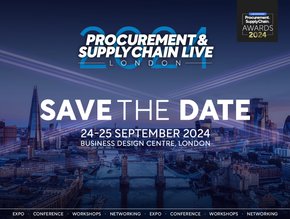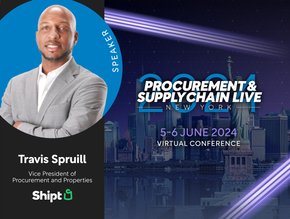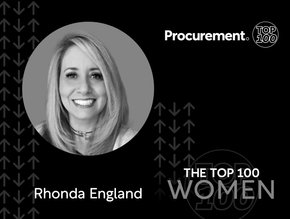Net Zero: How Procurement Professionals can Stay on Track

With 54 billion tonnes of CO2 being emitted each year, industry has entered into a critical decade for climate change. While 34% of the world’s largest companies are committed to net zero, findings from Accenture indicate that investments emissions reduction need to double by 2030 in order to rescue this risk of 93% failing to achieve their goals.
“Even in a scenario where companies accelerate emissions reduction to twice the current rates in the years to 2030 and then three times after – 59% would still fail by 2050,” says Accenture.
With this in mind, in this Special Report, Procurement Magazine speaks to leading executives from Informatica, OCS, and NCS Global to understand how in the context of procurement and supply chain, professionals can stay on track to meet their net zero targets.
On average, Scope 3 emissions account for more than 80% of an organisation’s carbon footprint, which encompasses everything that occurs in the supply chain — such as goods and services purchased, extraction and transportation of raw materials, business travel and the use of sold products. It can also include emissions from leased assets, investments and franchises.
“You’re talking about understanding the carbon footprint of potentially hundreds of suppliers, and all the components of the supply chain that links you to them,” says Levent Ergin, Global Chief ESG Sustainability Strategist at Informatica.
He adds: “Maintaining an accurate picture of an organisation’s carbon footprint is challenging enough — staying on top of that information for your whole procurement ecosystem is exponentially more so.”
Companies who are serious about reaching their net zero targets must understand the critical role that the procurement function plays in reducing carbon emissions. “Decarbonisation must start in the supply chain first, and chief procurement officers have a huge role to play,” Ergin adds.
But it is important to note that achieving net zero doesn’t lie in Scope 3 alone. Regulations such as the German Supply Chain Act and the EU’s Corporate Sustainability Due Diligence Directive mean that companies need to have robust due diligence across the entire procurement process to meet multiple requirements.
With this in mind, Ergin stresses the importance of an intelligent, data-first approach that enables the function to collate, clean, store and analyse data at scale across the supply chain. “Good data management is at the heart of staying on track to net zero and meeting supply chain regulations,” he notes “The cleaner and more available your data, the more you know, and the more targeted your decision making can be.”
The role of technology in net zero strategy
“Tracking the sustainability of a supply chain is first and foremost a data problem,” Ergin explains. Therefore, organisations need to have systems in place to capture the data they need, and they need to be able to handle the rapid increase in data management requirements.
“Put simply, the amount of data required for net zero tracking can only be reliably handled by high-capacity automated systems. Companies that are serious when it comes to tracking net zero commitments should not only build the right technology stack that allows data to be collected and stored but that also makes it usable and reliable for the wider business.
“In the volumes we’re talking about, companies need the ability to take an X-ray of ESG data and integrate information such as carbon emissions data, ESG rating agency data and supply chain ratings data from various sources into one platform with data governance and quality baked-in. This centralised hub of ESG data then becomes the golden source of truth.”
As regulations surrounding ESG and sustainability continue to rise, procurement functions need the ability to robustly interrogate their supply chain and have accurate supplier data readily accessible. This not only ensures that organisations are hitting their net zero targets but also ensures they can maintain market access to products by complying with a wide range of regulations.
He continues: “A strong data position is crucial here, helping businesses identify opportunities to decarbonise their operations and supply chain through waste management and circular economies — reducing, recycling, reusing, and removing where possible.”
The best strategies for staying on track
When it comes to neutralising emissions and staying on track, “it’s all about working with the supply chain and building up partnerships,” says Jacky So, UK and Ireland ESG Director at OCS. Effective procurement strategies for achieving net zero require a multifaceted and structured approach, that prioritises sustainability in vendor selection, investing in green technologies.
Echoing Ergin’s earlier comments, he adds: “It’s all about analysing many different data sets and looking at the different ways of monitoring differing maturity within suppliers to measure their scope.”
Paul Warburton, Chief Digital and Marketing Officer at NSC Global joins the conversation, stating: “Emphasising long-term value over short-term cost savings is crucial, as is fostering partnerships with suppliers committed to similar environmental goals.
“More importantly, good procurement strategies lead to encouraging the elimination of waste at every step of the cycle, doing this not only makes the procurement process cost efficient but also helps organisations to build a sustainable culture. Establishing clear sustainability criteria, regular monitoring, and transparent reporting mechanisms are key to staying on track. It is also essential to embed sustainability into culture through education and gamification.”
Tracking Scope 3 emissions is one strategy that procurement can adopt to meet their net zero targets and it starts with mapping the value chain of the business. Once this has been done, organisations can see where waste can be removed and emissions reduced through applied observability.
“Scope 3 requires companies to accurately and reliably collect, store, and analyse vast quantities of data,” says Levent “Previously, this information was either untracked or simply didn’t exist. Therefore, procurement functions need the ability to robustly interrogate their supply chain and have accurate supplier data at their fingertips.
“A strong data position is crucial here, helping businesses identify opportunities to decarbonise their operations and supply chain through waste management and circular economies — reducing, recycling, reusing and removing where possible.”
******
Make sure you check out the latest edition of Procurement Magazine and also sign up to our global conference series - Procurement & Supply Chain 2024
******
Procurement Magazine is a BizClik brand
- ePLDT’s CPO is born to the role of procurementProcurement Strategy
- How Nestle is Creating Better Lives for its Cocoa FarmersSupply Chain Management
- Circular Economy and the Benefits Beyond SustainabilitySustainability
- IRIS & Amazon Business ease Procurement Process for SchoolsSupply Chain Management

